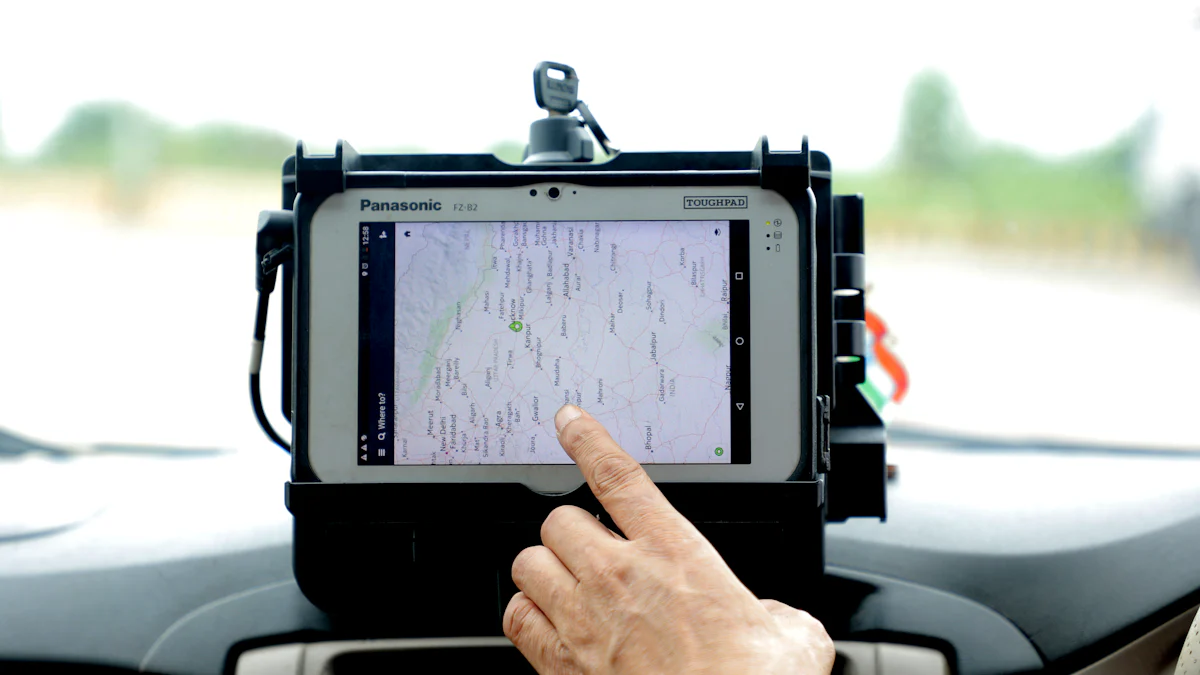Unlocking the Best Hidden Golf Strategies

Golfers often seek the thrill of discovering hidden golf strategies. These strategies can transform a player’s game, leading to significant improvements. Mastering these techniques provides seasoned golfers with an edge on the course. Enhancing hip range of motion can lead to longer drives. Balance training can significantly enhance performance. Total putts serve as a leading indicator of success. Only 26% of golfers break 90, highlighting the challenge and allure of improvement.
Hidden Golf Strategies for Mastering the Mental Game

Visualization Techniques
Pre-shot Visualization
Pre-shot visualization involves mentally rehearsing the shot before execution. Golfers should picture the ball’s trajectory, landing spot, and final position. This mental rehearsal helps in creating a clear plan for each shot. Developing a pre-shot routine that includes visualization can significantly enhance performance. Visualization reduces anxiety and increases confidence.
Imagining Success
Imagining success focuses on positive outcomes. Golfers should visualize successful shots and positive scenarios. This technique builds confidence and reinforces a positive mindset. Positive imagery can lead to better performance on the course. Consistent practice of imagining success can transform a golfer’s mental game.
Staying Focused Under Pressure
Breathing Exercises
Breathing exercises help maintain focus during high-pressure situations. Deep breathing calms the mind and body. Golfers should practice controlled breathing before and during shots. This technique reduces stress and enhances concentration. Regular practice of breathing exercises can improve overall performance.
Mindfulness Practices
Mindfulness practices involve staying present and focused. Golfers should concentrate on the current shot without dwelling on past mistakes or future outcomes. Techniques like meditation and mindful walking can enhance focus. Practicing mindfulness helps in managing pressure and maintaining a calm demeanor. Integrating mindfulness into the routine can lead to a more consistent and enjoyable game.
Hidden Golf Strategies for Advanced Course Management
Strategic Club Selection
Understanding Yardages
Golfers must understand yardages to make informed club selections. Knowing the distance to the target helps in choosing the right club. Accurate yardage measurements can lead to better shot execution. Golfers should use rangefinders or GPS devices to measure distances. Consistent practice with yardage tools improves accuracy and confidence.
Adapting to Course Conditions
Adapting to course conditions is crucial for effective club selection. Weather, wind, and terrain affect how the ball travels. Golfers should adjust club choices based on these factors. For example, strong winds may require a lower lofted club. Wet conditions may need more club to compensate for reduced roll. Awareness of course conditions enhances strategic play.
Playing to Your Strengths
Identifying Your Best Shots
Identifying best shots helps golfers play to their strengths. Golfers should analyze past performances to find patterns. Recognizing which shots consistently work well can guide strategy. For example, a golfer with a strong short game should focus on getting close to the green. Playing to strengths builds confidence and improves overall performance.
Avoiding High-Risk Plays
Avoiding high-risk plays reduces the chance of errors. Golfers should evaluate the risk-reward ratio of each shot. High-risk shots often lead to penalties or difficult positions. Choosing safer options can lead to more consistent scores. For example, laying up short of a hazard may be wiser than attempting a risky carry. Strategic decision-making minimizes mistakes and enhances enjoyment.
Hidden Golf Strategies for Enhancing Physical Skills
Specialized Drills
Short Game Drills
Short game drills focus on improving shots around the green. Golfers can practice chipping and pitching to enhance accuracy. One effective drill involves setting up targets at various distances. Golfers should aim to land the ball within a specific area. Repetition of this drill builds muscle memory and precision. Practicing bunker shots also falls under short game drills. Golfers can place balls in different sand conditions to simulate real play. Consistent practice of these drills sharpens short game skills.
Long Game Drills
Long game drills target full swings and driving distance. Golfers can use alignment sticks to ensure proper setup. Practicing with different clubs helps in understanding their unique characteristics. One useful drill involves hitting balls with a focus on maintaining balance. Golfers should also practice hitting from uneven lies to simulate course conditions. Another effective drill includes working on swing tempo. Repeating these drills enhances overall long game performance.
Flexibility and Strength Training
Golf-specific Exercises
Golf-specific exercises improve flexibility and strength. Stretching routines can enhance hip range of motion. Exercises like lunges and squats build lower body strength. Core exercises, such as planks, stabilize the body during swings. Golfers can use resistance bands to mimic swing movements. Regular practice of these exercises leads to longer drives and better control.
Injury Prevention Techniques
Injury prevention techniques are crucial for longevity in golf. Warm-up routines before playing reduce the risk of injuries. Dynamic stretches prepare muscles for the physical demands of golf. Golfers should focus on strengthening areas prone to injury, such as the lower back and shoulders. Proper hydration and nutrition also play a role in injury prevention. Consistent application of these techniques ensures a healthier and more enjoyable golfing experience.
Hidden Golf Strategies for Leveraging Technology

Using Golf Simulators
Benefits of Simulated Practice
Golf simulators offer a controlled environment for practice. Players can work on hidden golf strategies without weather interruptions. Simulators provide instant feedback on each shot. This helps golfers make quick adjustments. Consistent practice on a simulator enhances muscle memory. Golfers can play on virtual versions of famous courses. This prepares players for real-life conditions.
Analyzing Swing Data
Swing data analysis is a key feature of golf simulators. Simulators track metrics like swing speed, ball speed, and launch angle. Analyzing this data helps golfers identify areas for improvement. Players can focus on specific aspects of their swing. Detailed reports guide targeted practice sessions. This leads to more efficient training. Understanding swing data is one of the most effective hidden golf strategies.
Golf Apps and Gadgets
GPS Rangefinders
GPS rangefinders provide accurate distance measurements. These devices help golfers select the right club. Knowing exact yardages improves shot accuracy. Rangefinders also display course layouts. This assists in strategic planning. Using a GPS rangefinder is a valuable hidden golf strategy. It enhances decision-making on the course.
Swing Analyzers
Swing analyzers attach to clubs or gloves. These gadgets record detailed swing mechanics. Data includes metrics like swing path and tempo. Analyzers often sync with mobile apps for easy access. Reviewing swing data helps golfers make precise adjustments. Regular use of swing analyzers refines technique. This technology supports the implementation of hidden golf strategies.
Integrating hidden golf strategies into your game can lead to remarkable improvements. Experimenting with different techniques helps golfers find what works best. Continuous practice and adaptation ensure steady progress. Embrace the journey of learning and enjoy the game more. Every golfer can achieve better performance by applying these hidden golf strategies.

